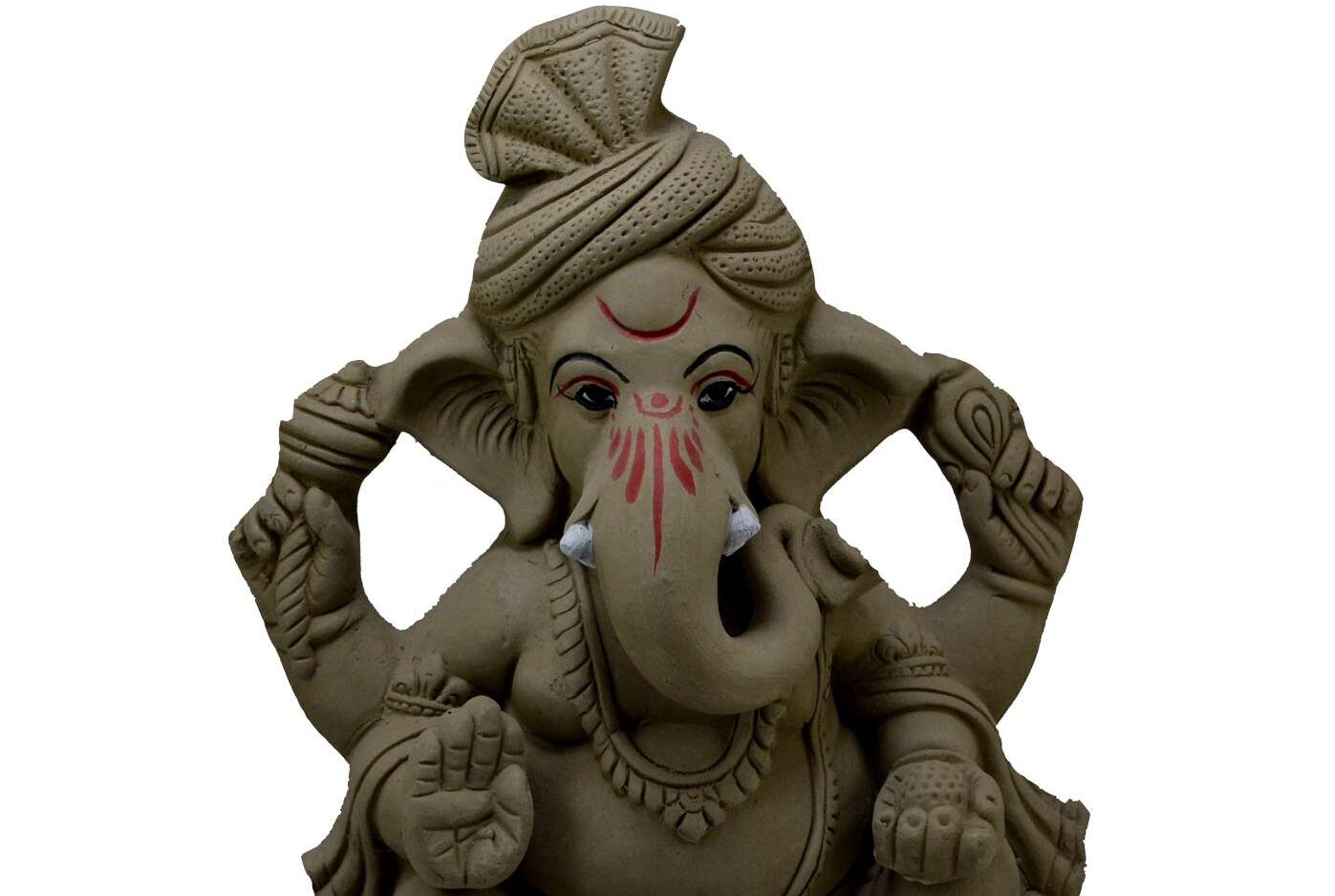Creating a clay Ganesha idol is a beautiful and traditional craft that involves several steps, blending artistry, devotion, and respect for the environment. Here’s a detailed description of the process:
1. Preparing the Clay
- Selecting the Clay: Natural clay is sourced, often from riverbeds or other suitable locations. The clay should be soft, pliable, and free from impurities. It’s typically soaked in water to achieve the right consistency.
- Kneading: The soaked clay is kneaded thoroughly to remove air bubbles and ensure it is uniform and smooth. This makes the clay easier to mold and shape.
2. Shaping the Idol
- Creating the Base: The process begins by shaping the base of the idol, usually a round or oval platform. This base provides stability and support for the entire structure.
- Forming the Body: The torso of Lord Ganesha is sculpted first, with careful attention to proportion and symmetry. The artist gradually adds layers of clay to build the body, ensuring it is sturdy and well-balanced.
- Sculpting the Head and Limbs: The head, with its distinctive elephant features, is crafted next. The trunk, ears, and eyes are meticulously shaped to give Ganesha his unique and divine appearance. The arms and legs are then added, often in seated or standing poses, depending on the design.
3. Detailing
- Facial Features: The eyes, mouth, and other facial features are carefully carved, often with simple tools or even just fingers. The expression is crucial, as it should reflect the benevolence and wisdom of Lord Ganesha.
- Ornaments and Accessories: Intricate details like the crown, jewelry, and the sacred thread (Yajnopavita) are added using small amounts of clay. Each ornament is crafted with precision, reflecting traditional iconography.
- Hand-held Items (Aayudhas): Ganesha’s hands typically hold various objects like a modak (sweet), an axe, a lotus, and a noose. These are shaped separately and then attached to the idol.
4. Drying
- Air Drying: Once the sculpting is complete, the clay idol is left to dry naturally. This can take several days, depending on the size and thickness of the idol. The drying process is crucial, as it allows the clay to harden and become durable.
- Avoiding Cracks: To prevent cracking, the idol is dried slowly, sometimes covered with a damp cloth or kept in a shaded area away from direct sunlight.
5. Painting and Decoration
- Natural Paints: Once fully dried, the idol may be painted with natural, non-toxic colors. Traditional colors like red, yellow, and white are commonly used, reflecting the vibrant spirit of Ganesh Chaturthi.
- Final Touches: Additional decorative elements like fabric clothing, jewelry, and crowns may be added to enhance the idol’s appearance. However, many prefer to keep the idol in its natural clay form, embracing its simplicity and earthiness.
6. The Final Blessing
- Pranapratishtha: Before the festival, a ritual known as Pranapratishtha is performed, where the idol is infused with divine energy through mantras and prayers. This consecrates the idol, making it a revered representation of Lord Ganesha.
7. Immersion (Visarjan)
- Eco-friendly Immersion: After the festival, the clay idol is immersed in water, symbolizing the cycle of creation and dissolution. The clay dissolves naturally, returning to the earth without harming the environment.
This process not only results in a beautiful idol but also fosters a deep connection to tradition, spirituality, and the environment. The making of a clay Ganesha idol is an art form that embodies devotion, creativity, and ecological consciousness
